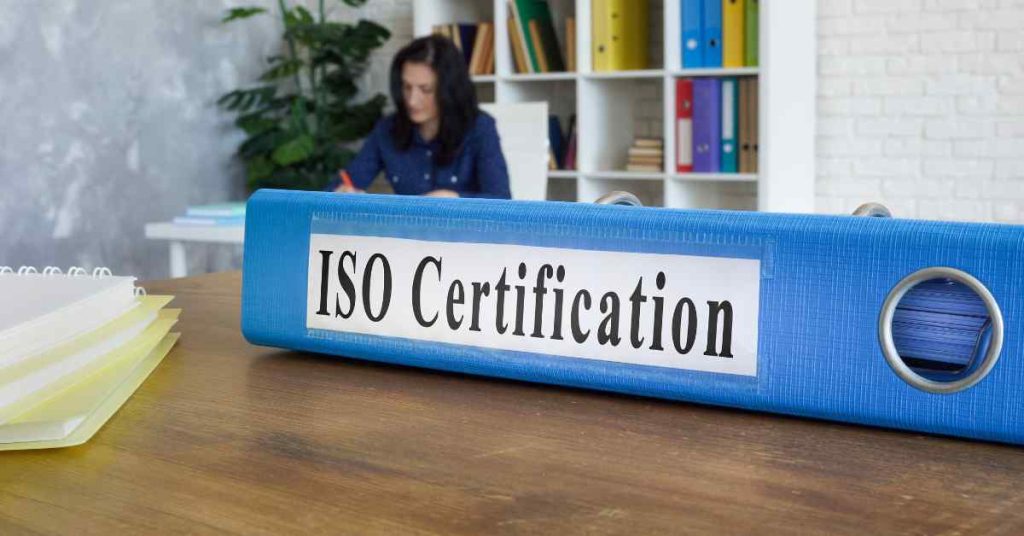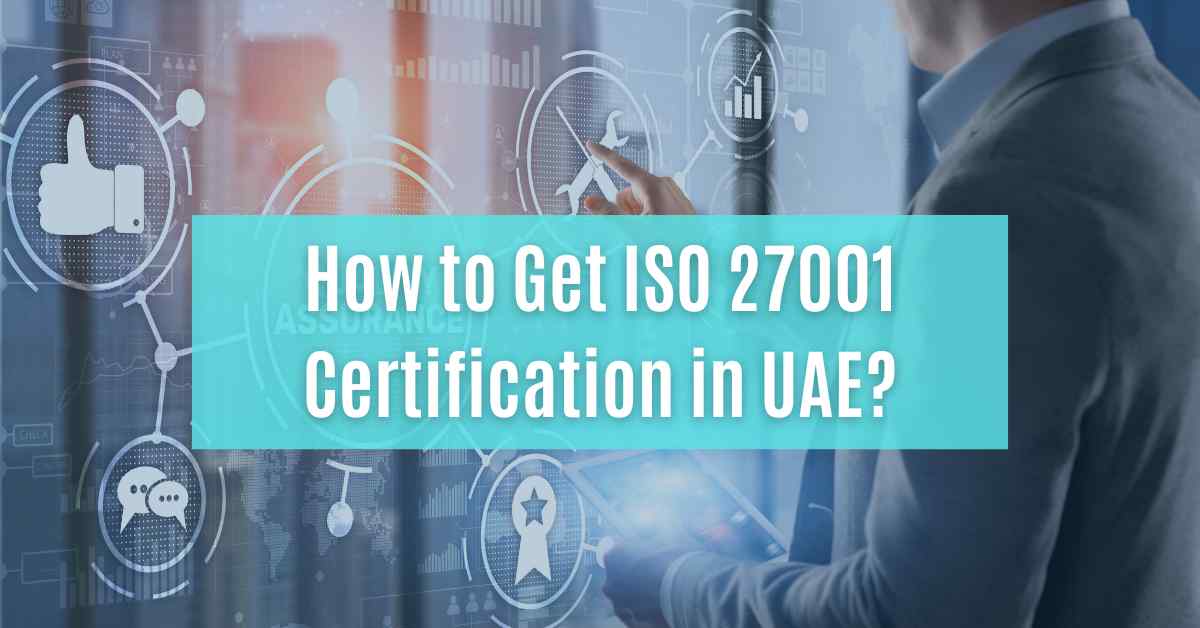A widely recognized standard, ISO 27001, provides guidelines for an Information Security Management System (ISMS).
It provides a mature and organized strategy for lower information security risks, such as data privacy, cyber security, and IT governance.
Being ISO 27001 certified demonstrates to partners, stakeholders, and clients the organization’s commitment to data protection by demonstrating that it has adopted globally recognized information security measures.
With its sophisticated digital infrastructure and quick technological development, the United Arab Emirates has increased the importance of secure data processing.
Data-driven businesses are becoming increasingly prevalent across various sectors, including banking and finance, healthcare, and retail, making them more susceptible to information security risks.
For companies in these areas, ISO 27001 accreditation is essential for boosting security, preserving client confidence, and meeting regulatory obligations for data protection.
Table of Contents
Steps to Obtain ISO 27001 Certification in UAE

Step 1: Understand the ISO 27001 Requirements
Understanding the ISO 27001 criteria in-depth is the first step toward obtaining certification. This phase demands a thorough analysis of the ISO 27001:2013 standard.
Information Security Management System (ISMS) specifications are provided by ISO 27001:2013 for use within organizations. The standard specifies benchmarks for measuring an organization’s information security management.
A risk management process is intended to secure an organization’s information and reassure stakeholders that the risk is handled effectively.
The standard is broken down into two main components: Annex A, which contains 114 controls organized into 14 sections, and the core requirements or clauses of the standard (sections 4 to 10).
The Annex A controls provide a range of actions that can be taken to mitigate identified risks, while the core criteria lay the framework for the ISMS.
To successfully manage an ISO 27001 compliance project, organizations should delve into the specifics of each clause and control, match them with their particular business context, and implement these requirements into their ISMS.

Step 2: Conduct a Risk Assessment
ISO 27001’s fundamental component is risk assessment. Organizations detect potential threats to their information security using this procedure, which also considers weaknesses and potential effects. The ISO 27001 standard requires organizations to use a systematic approach to risk assessment.
There are various steps in the ISO 27001 risk assessment process:
- Risk Identification: During this stage, the organization should list its resources, potential threats to those resources, vulnerabilities that the threats might take advantage of, and the potential effects on the business should a threat materialize.
- Risk Analysis: The organization determines the risk levels at this stage based on their possible impact and likelihood of occurrence.
- Risk Evaluation: The organization identifies which risks need to be addressed using previously established risk acceptance criteria.
Step 3: Create an ISMS for Information Security Management
The next step is to create an Information Security Management System (ISMS) tailored to your organization’s requirements after understanding the requirements of ISO 27001 and conducting a thorough risk assessment.
Your organization’s unique policies, practices, and activities put in place to manage and reduce the risks found during the risk assessment are described in the ISMS.

The steps listed below should be followed to create an effective ISMS:
- Define the ISMS Scope: Based on the regions of your business where information is used and stored, define the ISMS scope. The scope must be suitable, pertinent, and in line with the needs of your organization’s strategic risk environment.
- Create a Comprehensive Risk Treatment Plan: Create a thorough risk treatment plan based on the risk assessment. This should include information on the safeguards the company will put in place to address the risks that have been identified, taking into account cost, benefits, and risk acceptance criteria.
- Identify Relevant Controls: Choose appropriate controls from ISO 27001 And A that will aid in lowering, eliminating, or shifting the identified risks. The controls must suit your organization’s specific threat environment.
- Documentation: Ensure your ISMS is fully documented. This includes but is not limited to the Statement of Applicability (SoA), Scope, Policy, Risk Assessment Methodology, and Risk Treatment Plan. These documents demonstrate the methodical process your company uses to safeguard its information.
Step 4: Implement the System
Ensuring your ISMS is appropriately implemented within the organization comes next once designed and documented. At this point, it is essential to guarantee that the practices described in your ISMS are applied precisely and consistently throughout all pertinent company divisions.
Follow the following steps to implement the ISMS:
- Develop Your Staff: The effectiveness of the ISMS largely hinges on how well your staff understands and adheres to the included protocols. All of your workers should receive thorough and robust training on the procedures and controls defined in the ISMS.
- Implement Controls: Put the ISMS’s recommended controls into practice. To make sure each control is operating correctly, test it. Be ready to modify controls if conditions change or fail to function as intended.
- Monitor the System: The effectiveness of your ISMS depends on ongoing system monitoring. To gauge the effectiveness of your ISMS, do routine audits and establish KPIs.
- ISMS Review: Continually assess the effectiveness of your ISMS, taking into account its scope, policies, objectives, processes, and controls. The outcomes of risk assessments, comments from interested parties, audit results, and legislative requirements are all considered as inputs to these reviews.

Step 5: Conduct an Internal Audit
After implementing the ISMS, evaluating its performance and finding any holes or non-conformities is critical. The internal audit allows the company to assess its information security procedures, guidelines, and safeguards compared to ISO 27001.
During the internal audit, a dedicated team or an impartial auditor assesses the organization’s compliance with ISO 27001 requirements.
Analyzing the documentation, conducting interviews, and analyzing the proof of applied controls are all part of the audit process. The goal is to evaluate the ISMS’s efficacy and efficiency and pinpoint development opportunities.
The internal audit offers management insightful information and feedback on how well the implemented ISMS works. Organizations might identify issues that need to be corrected before the external certification audit based on the findings.
To comply with ISO 27001 requirements, corrective measures may include changing policies, retraining people, or modifying controls.
Step 6: Correct any identified issues.
The organization must move quickly to remedy any concerns or non-conformities from the internal audit results. This entails creating and implementing corrective measures that address the underlying reasons for noncompliance or shortcomings.
The following steps comprise the corrective action process:
- Identify the root cause: To ascertain the root cause of the identified non-conformity, perform a detailed analysis. This analysis assists in coming up with a workable remedy to stop the problem from happening again.
- Develop an action plan: Make a thorough plan with clear procedures to deal with the concerns found. The strategy should outline who is responsible for what, when, and what resources are required.
- Implement corrective actions: Put the action plan into action and make the required adjustments to address the detected non-conformities. This can entail adopting new controls, conducting more training, or changing policies.
- Monitor and confirm effectiveness: Continually examine and assess the corrective activities you’ve implemented to ensure they’re working. To confirm compliance with the requirements of ISO 27001, this can entail carrying out follow-up audits or assessments.
- Document and communicate: Keep track of the corrective activities you’ve made, the procedures you followed, and the results. The external certification audit uses this documentation as support.
Benefits and Drawbacks of ISO 27001 Certification in UAE

The Pros and Cons of pursuing ISO 27001 certification must be carefully weighed. To make a wise choice, it is crucial to comprehend the benefits and difficulties of ISO 27001 certification.
Benefits of ISO 27001 Certification in UAE

1. Enhanced Information Security: Strengthened data security is the main advantage of ISO 27001 certification. Establishing an Information Security Management System (ISMS) based on ISO 27001 criteria aids in identifying threats and vulnerabilities, evaluating their effects, and defining the necessary policies to protect data.
2. Meet Legal & Regulatory Requirements: Like many other nations, the UAE has laws protecting personal data. Implementing these laws into organizational policies and practices through ISO 27001 certification provides a systematic strategy to comply with these requirements.
3. Competitive Advantage: Having ISO 27001 certification can give you a big advantage over rivals in a data-driven economy where information security is crucial. It cultivates a reputation of trust by demonstrating a commitment to strict data security procedures to customers and stakeholders.
4. Reduced Risk of Data Breaches: Data breaches and cyberattacks are less likely when an ISMS that complies with ISO 27001 is in place. Due to the strict protocols and controls in place, the consequences of a breach can be reduced.
5. Increased Customer Confidence: Protection assurances can increase customer satisfaction and trust. Businesses prioritizing data protection are more likely to receive customer interaction, which helps keep current clients and draw in new ones.
Drawbacks of ISO 27001 Certification in UAE

1. Expenses: It might be expensive to obtain ISO 27001 certification. Costs include the certification procedure and the creation and upkeep of the required systems, controls, and procedures. Training costs can also be to inform staff members of ISO 27001 and ISMS requirements.
2. Time-consuming Process: Obtaining ISO 27001 certification can take some time. Defining the scope, carrying out risk analyses, installing controls, revising policies, and training people takes a lot of time and effort.
3. Requirement for a Culture Change: Adopting ISO 27001 necessitates a change in the corporate culture. It may take a lot of change management to ensure staff follow new security rules and promote a security-first mentality.
4. Ongoing Commitment Required: It takes continual dedication to keep ISO 27001 certification. To effectively manage emerging risks, businesses must periodically assess and upgrade their ISMS, which requires ongoing resources and efforts.
5. Potential for Business Disruption: Implementing ISO 27001 may temporarily affect company operations depending on the organization’s present level of information security. Thus, this must be carefully planned and controlled.
Comparison Between ISO 27001 and Other ISO Certifications

Other ISO standards, like ISO 27001, offer a foundation for best practices and encourage ongoing organizational development.
These specifications, such as ISO 9001 and ISO 1401, allow businesses to improve their operations and fulfil regulatory requirements. We contrast them here with ISO 27001.
ISO 9001 Quality Management System (QMS)
The Quality Management System (QMS) standard ISO 9001 was created to assist organizations in ensuring that they satisfy customer expectations while providing a constant quality that is continually evaluated for improvement.
While ISO 9001 does not, like ISO 27001, focus exclusively on information security, it does advise identifying and controlling various hazards that may influence quality.
The three guiding principles of ISO 9001 are management commitment, customer focus, and continuous improvement.
No matter the company’s size or industry, it applies to them all. It is advantageous for a company to demonstrate that it can regularly deliver goods and services that satisfy clients and legal obligations.

ISO 14001 Environmental Management System (EMS)
A globally recognized standard known as ISO 14001 outlines the specifications for an environmental management system.
Through more effective resource utilization and waste reduction, it aids organizations in improving their environmental performance, giving them a competitive advantage and the confidence of stakeholders.
Instead of concentrating on establishing performance standards, it helps businesses set up a completely responsive management system to address environmental concerns.
Although ISO 27001 and ISO 9001 are based on the Annex SL structure and share many similarities, they each have a different purpose.
While ISO 9001 attempts to guarantee quality and ISO 14001 concentrates on controlling environmental impacts and hazards, ISO 27001’s primary objective is information security.
Here is the comparison chart between ISO 27001 vs ISO 9001 vs ISO 14001
| ISO Standards | Focus | Benefits | Applicability |
| ISO 27001 | Information Security Management | Ensures information security, regulatory compliance, and customer confidence | All organizations dealing with sensitive information |
| ISO 9001 | Quality Management | Ensures consistent product/service quality as well as customer satisfaction | All organizations seeking to improve product and service quality |
| ISO 14001 | Environmental Management | Enhances environmental performance, complies with regulations, and improves public image. | All organizations seeking to manage their environmental responsibilities |
Conclusion: How to get ISO 27001 Certification in UAE?
In conclusion, ISO 27001 accreditation is highly valuable for companies in the UAE. It is a widely accepted standard that supports organizations in managing information security risks and observing legal obligations.
The ISO 27001 accreditation gives firms a competitive edge, increased consumer trust, and improved data safety in light of the rising digitization and cybersecurity concerns.
Businesses in the UAE can protect their data, improve their information security procedures, and show their dedication to protecting sensitive data by creating an Information Security Management System (ISMS) based on ISO 27001 regulations.
Adopting ISO 27001 certification is a proactive move that can guarantee ongoing business continuity and long-term success in the constantly changing digital environment.
We Can Help You Become an ISO 27001 Certified Organisation!
FAQs: How to get ISO 27001 Certification in UAE?
1. What are the UAE’s benefits of ISO 27001 certification?
To preserve sensitive information, adhere to data protection laws, increase customer trust, and reduce cybersecurity risks, the UAE must obtain ISO 27001 accreditation.
2. Who in the UAE can obtain ISO 27001 certification?
Answer: Any organization that manages sensitive data and seeks to strengthen its information security procedures is eligible for ISO 27001 certification, regardless of size or industry.
3. What advantages does ISO 27001 certification offer?
Benefits include better customer confidence, lowered risk of data breaches, competitive advantage in the market, and compliance with legal and regulatory regulations.
4. How long does it take to become certified for ISO 27001?
The answer varies based on the size, complexity, and degree of security procedures already in the organization. The time needed to become certified may range from 6 to 12 months.
5. What part does the executive level play in ISO 27001 certification?
Answer: The leadership and dedication of top management are essential in building and sustaining an ISMS and coordinating business goals with information security objectives.
6. Do I need a risk assessment to obtain ISO 27001 certification?
Answer: Yes, a risk assessment is a crucial ISO 27001 requirement. It serves as a foundation for implementing suitable security measures and aids in identifying and assessing information security risks.
7. Can I employ outside experts to obtain ISO 27001 certification?
Yes, organizations can use knowledgeable ISO 27001 consultants who can offer direction, support, and expertise in putting the standard into practice.
8. Describe the auditing process for ISO 27001 certification.
Internal and external audits are both necessary for certification. The company conducts internal audits to evaluate its compliance with ISO 27001 standards. A certification agency conducts an external audit to confirm conformity and grant the certification.
9. How long is an ISO 27001 certification valid in the UAE?
The ISO 27001 accreditation is good for three years. However, surveillance audits are carried out annually to guarantee ongoing compliance throughout the certification period.












